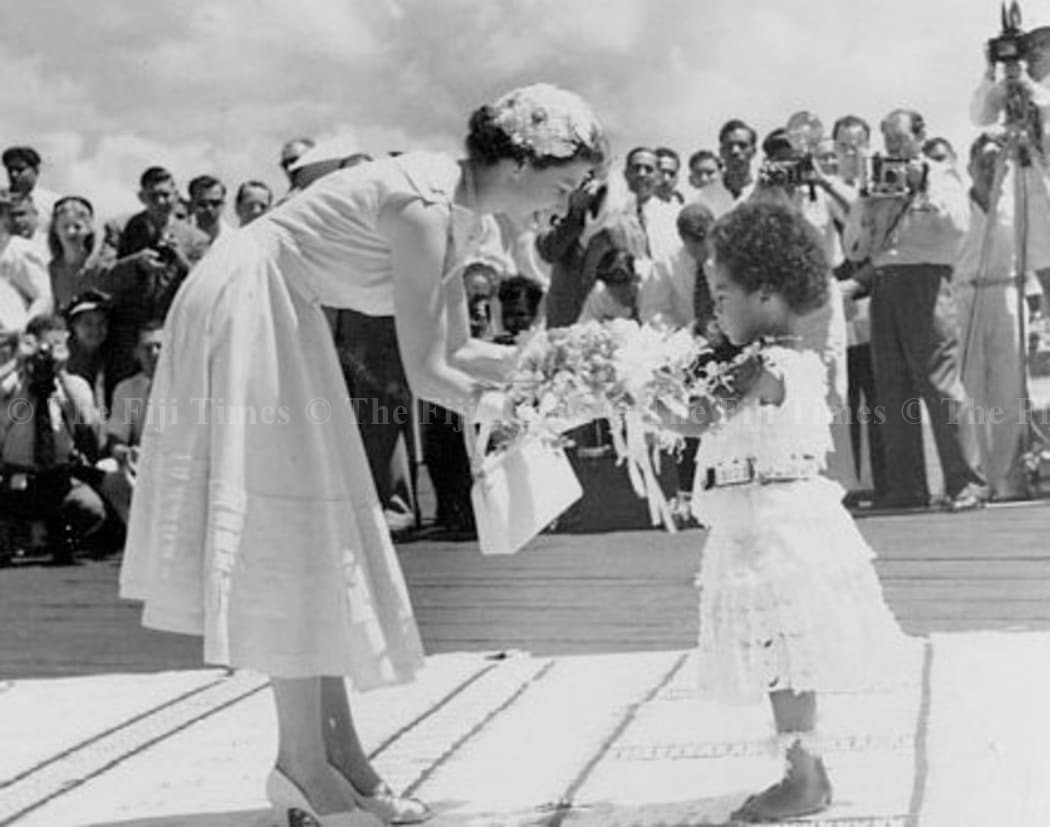Cameras rolled and clicked as the small Adi Mei Kainona, barely four years old, moved with shy dignity towards the Queen to present a bouquet of gorgeous Fijian flowers, including the rare tagimaucia bloom from Taveuni.
This, according to an article published by The Fiji Times on June 8, 1977.
After the Queen had accepted the bouquet with a smile, the small girl stepped and sank to the ground amidst her billowing skirt in the customary gesture of respect.
“Actually, I do not remember much about that day,” the grown-up Adi Mei said many decades later.
“What I remember most is what happened before, Ratu Sir Lala Sukuna was coaching me for the occasion. I never got it right until that day.”
Adi Mei also remembered her traditional dress which her mother, the late Adi Laisa Ganilau, and the women of Lau, made from cutting white masi cloth.
Adi Mei, the daughter of Deputy Prime Minister Ratu Sir Penaia Ganilau, married bank officer Penisoni Gauna, and had a one-year-old daughter, Salote.
Ratu Sir Lala Sukuna, who was invested with the KCMG on that visit, died in May 1958.
Governor Sir Ronald Garvey and Ratu Sir Lala were on the royal tour organising committee along with the late Sir Maurice Scott, Suva lawyer DM Noel McFarlane, who was the Mayor of Suva, Cr Len Usher, who was then government public relations officer and later became Mayor of Suva and editor of The Fiji Times, DA Butler, who was the manager of the United Steam Ship Co and owner of the Grand Pacific Hotel, the then Commissioner Western H. McAlpine, the late A. A Ragg, Police Commissioner E.K. Law, who returned to Britain to become a clergyman and Joseph Sykes, the committee secretary who was the chairman of the Public Service Commission.
Ram Prasad, of Nasinu Nine Miles, remembered how it was when he was an eight-year-old schoolboy.
“The road between Suva and Nausori, which I seem to remember, was sealed for the Queen to ride on. It was lined three-deep with people,” Mr Prasad said.
“Each little village community got out its decorations and people put up their banners with welcome messages. We children got medals, little, tiny metal ones with the Queen’s head on them and strung on red, white and blue ribbons.
“We got flags too, not plastic in those days but cloth ones on a wooden stick. Just before the royal procession was due to come past, a Land Rover with loudspeakers drove down the road telling the people that it was right to wave to the queen.



